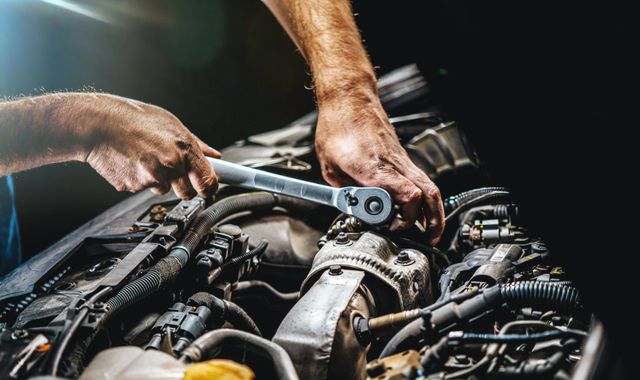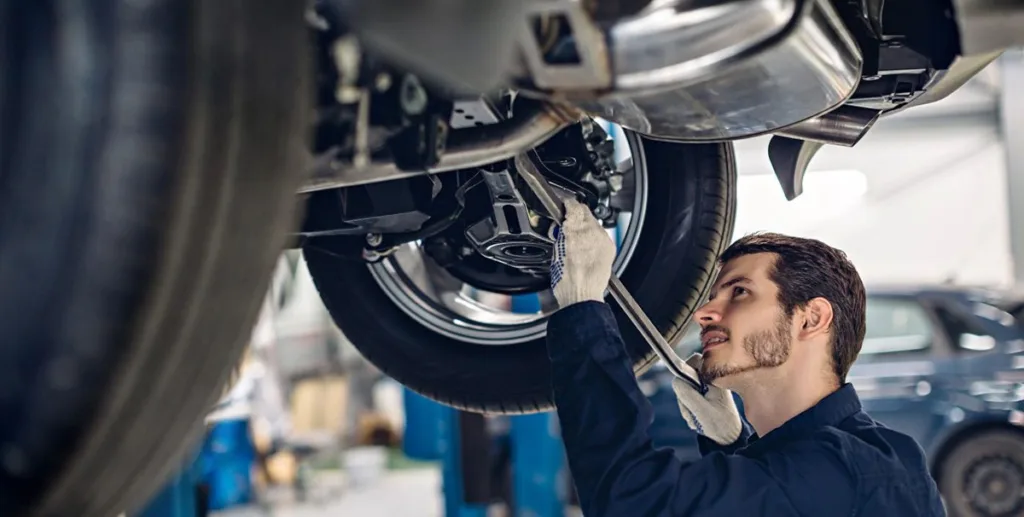All Categories
Featured
Your car's shock absorber is a vital part that improves your driving experience by supplying control, stability, and comfort. With time, damage on this system can endanger your car's safety and security and efficiency. By adopting proper maintenance practices, you can prolong the life of your suspension and avoid pricey fixings. Below's a detailed overview to keeping your suspension system in exceptional form.
![]()
Dripping Fluid: Oil around the struts or shocks suggests they may need substitute. Harmed Springs: Cracks or breaks in the springtimes can trigger uneven automobile height. Rust or Rust: Metal parts like control arms and bushings are vulnerable to corrosion gradually. Have your suspension system examined by a specialist mechanic. if you see any irregularities.
Maintain tires pumped up to the suggested stress. Turn tires every 5,000 to 7,500 miles. Balance and align wheels annually or after striking holes or visuals. Unequal tire wear is a common sign of suspension misalignment or used elements.
![]()
Final thought. Appropriate maintenance of your suspension system is vital for making sure a comfy and secure driving experience. By carrying out regular assessments, changing used parts, preserving tire treatment, and driving properly, you can keep your suspension in peak condition. Aggressive care not only protects against costly repair work however additionally ensures your automobile's long life and safety and security for every single trip.
- Comprehend the Importance of the Shock Absorber. The suspension system absorbs shocks from irregular roads, sustains the vehicle's weight, and keeps the tires firmly touching the roadway. It includes shocks, shows off, springtimes, control arms, and bushings, all of which collaborate to ensure a secure and smooth experience. Recognizing its importance is the initial action toward correct treatment.
- Conduct Routine Aesthetic Evaluations. Frequent aesthetic checks can help determine possible problems early. Seek:

Dripping Fluid: Oil around the struts or shocks suggests they may need substitute. Harmed Springs: Cracks or breaks in the springtimes can trigger uneven automobile height. Rust or Rust: Metal parts like control arms and bushings are vulnerable to corrosion gradually. Have your suspension system examined by a specialist mechanic. if you see any irregularities.
- Address Unusual Noises and Signs And Symptoms. Unusual noises, such as creaking, squeaking, or clunking, usually signal suspension problems. A bouncy trip, difficulty steering, or the vehicle pulling to one side shows that a suspension element could require focus. Don't ignore these indications; early discovery can stop more damage.
- Keep Proper Tire Care. Tires and suspension collaborate to deliver a smooth adventure. To reduce tension on your suspension system:
Maintain tires pumped up to the suggested stress. Turn tires every 5,000 to 7,500 miles. Balance and align wheels annually or after striking holes or visuals. Unequal tire wear is a common sign of suspension misalignment or used elements.
- Change Worn-Out Elements promptly. Suspension parts like shocks, shows off, and bushings use out in time. Suppliers generally advise replacing shocks and shows off every 50,000 to 100,000 miles, depending on driving problems. Delaying replacement can compromise handling, security, and total vehicle efficiency.

- Prevent Overloading Your Lorry. Surpassing your lorry's weight capacity puts excessive pressure on the shock absorber. This can lead to much faster tear and wear on elements like springtimes and shocks. Always check your proprietor's handbook for weight limitations and stay clear of overloading.
- Drive Sensibly. Aggressive driving habits, such as speeding over fractures, taking corners too quick, or often driving on rough roads, can damage your suspension. Practice cautious driving to minimize wear and prolong the life expectancy of your shock absorber.
- Schedule Expert Examinations. Regular expert examinations are crucial for determining covert problems and making certain optimum performance. Technicians can detect problems that aren't noticeable throughout a DIY check, such as used ball joints or control arm damage.
Final thought. Appropriate maintenance of your suspension system is vital for making sure a comfy and secure driving experience. By carrying out regular assessments, changing used parts, preserving tire treatment, and driving properly, you can keep your suspension in peak condition. Aggressive care not only protects against costly repair work however additionally ensures your automobile's long life and safety and security for every single trip.
Latest Posts
Trustworthy Commercial Roof Covering Solutions by Weathercraft
Published May 26, 25
1 min read
Uncover Best Vehicle Maintenance Solutions from Montclare Auto Repair – Quality Service Today
Published May 25, 25
1 min read
Trusted Expenses Door Solutions for Houses and Businesses
Published May 24, 25
1 min read
More
Latest Posts
Trustworthy Commercial Roof Covering Solutions by Weathercraft
Published May 26, 25
1 min read
Uncover Best Vehicle Maintenance Solutions from Montclare Auto Repair – Quality Service Today
Published May 25, 25
1 min read
Trusted Expenses Door Solutions for Houses and Businesses
Published May 24, 25
1 min read